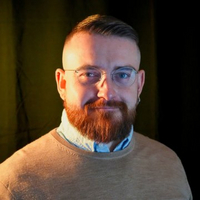Uni60+: Neue Technologien – Folgen für Beschäftigung und Qualifikation
Online
Currently, it is almost a truism to say that selective attention is crucial for goal-directed behaviour. It allows us to recognise objects and (re)acquire skills and knowledge. However, neurocognitive models of selective attention and its development, and of learning, are based on lab studies using typically unisensory (visual, auditory) stimuli. This contrasts with the multisensory nature of everyday environments (e.g., classroom, high-street) and the brain’s mirroring propensity for integrating multisensory information and the non-linear effects of the latter on brain and cognition.
I will discuss research, mine and that of others, showing how traditional laboratory research and neuroscientific research “in the wild” can be bridged by an approach that integrates rigorous behavioural measures, gauging the information rich nature of EEG through multivariate analyses and advances in neurotechnology (Matusz et al. 2019 JOCN). I will discuss how studying selective attention in multisensory settings can shed light on the dynamic, reciprocal development of cognitive-attentional and (multi-)sensory skills in service of learning. I’ll also demonstrate how EEG neuroimaging can help identify the elusive neuro-cognitive mechanisms of developing attentional processes in naturalistic settings.
Finally, I will discuss how the careful, grounded in basic and clinical science, use of neurotechnologies like virtual/mixed reality, can offer important new insights into the understanding of sensory and neurodevelopmental conditions, their detection, diagnosis and care, as well as a more holistic perspective on development, integrating health and education.

Dr. Paul Matusz is an Associate Professor and head of the Physiotherapy Lab at the School of Health Sciences, HES-SO Valais-Wallis, where he also leads the Group for Real-World Neuroscience (GROWN) and serves as Editor-in-Chief of Mind, Brain & Education. His research explores how attentional and multisensory processes operate in natural environments, develop across the lifespan, and can support rehabilitation in clinical populations. After completing his PhD and postdoctoral training at the University of Oxford and in Switzerland, he has led several interdisciplinary projects combining neuroscience, education, and technology — including studies using EEG, virtual reality, and machine learning to enhance learning, treat amblyopia, and improve diagnosis and therapy in autism spectrum disorder and brain injury.